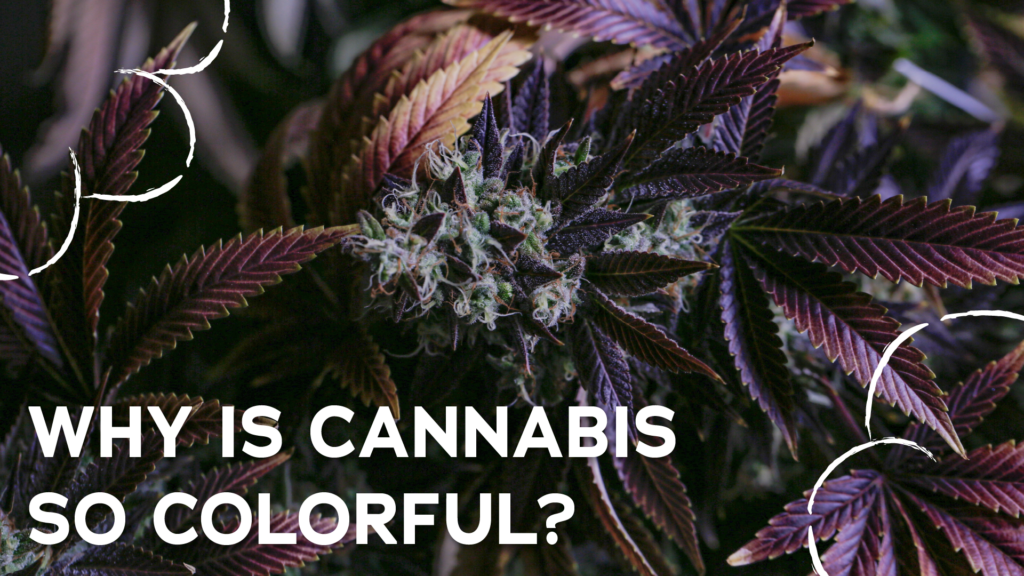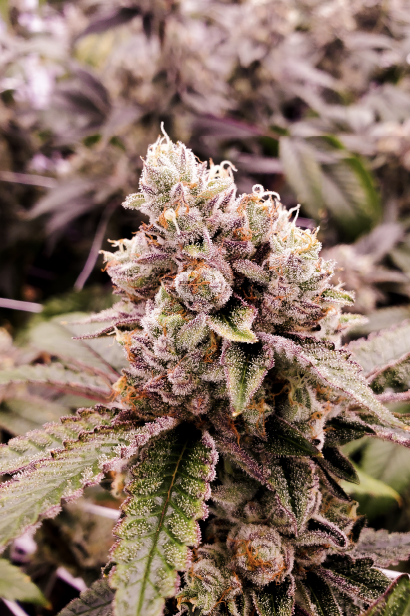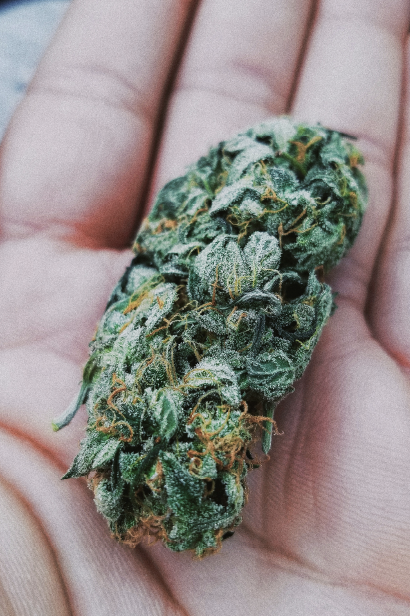If you’ve ever browsed a grow’s Instagram or taken a close look at your bud, you may noticed the different colors you can find in cannabis. Oranges, Purples, Blues, Greens… the list goes on.
These colors occur naturally, and they are a result of multiple factors like grow conditions and plant genetics! In this post, we’ll explore the colors of cannabis and take a look at the plant’s natural compounds that influence color, how environmental factors influence color, and what causes different colors to appear in cannabis.
The Natural Pallet: Compounds that Affect Cannabis Colors
The cannabis color story begins with natural pigments. Colorful cultivars contain certain natural pigments that dictate the color of the plant. Here are some of the most common pigments in cannabis:
Chlorophyll
We all know chlorophyll for its role in the photosynthesis process in most plants. Chlorophyll is what gives plants the ability to convert light into energy, making them grow. It also is what gives more plants, not just cannabis, their characteristic green colors.
Flavonoids
Flavonoids are compounds produced in most plants that play a major role in their color. There are thousands of types of flavonoids, and they are all unique. A certain type of flavonoid called anthocyanin is what creates unique colors in plants that aren’t the greens we are familiar with. More specifically, anthocyanins are responsible for the blues, purples, and even reds you find in fruits, as well as in cannabis. They also play a role in protecting plants from certain diseases and UV rays.
Carotenoids
Carotenoids create the reds, oranges, and yellows often found in cannabis and many other plants. They also help with photosynthesis, similar to chlorophyll, and their colors tend to appear in cannabis later in the growth cycle. You can find carotenoids in a lot of yellow and orange plants, like pumpkins and carrots.
How The Environment Colors Cannabis
When cannabis is growing, the environment it is cultivated in heavily influences the colors the plant will develop. Growing is farming, and it’s farming that requires a lot of meticulous care, attention to detail, and knowledge. Striking an ideal balance between multiple factors (like the ones listed below) can determine the vibrancy of a cultivar. Here are some key parts of the growing process that affect plant color.
Soil PH
Soil PH is a crucial factor in the growing process, and it also affects the colors of the plant. Soil can be acidic, alkaline, or neutral, and different balances produce different results in different cultivars. Usually, a grower will only manipulate the PH of the soil during the plant’s flowering phase. These changes are usually subtle, too, as soil that is too alkaline or acidic and harm the plant and inhibit growth.
Nutrients
Cannabis plants have to be fed. This gives them the essential nutrients they need to grow and thrive and ultimately produce great harvests. Nutrient deficiency can cause cannabis buds to change color. However, nutrient deficiency is bad for the plant, so growers will not deliberately do this to the plant to influence its color.
Temperature
Temperature directly affects chlorophyll production in the plants. In higher temperatures (within a plant’s comfortable temperature range), plants will typically produce more chlorophyll and therefore appear greener. In lower temperatures, they may produce slightly less because the chloroplasts within it slow down. This gives the other pigments, the carotenoids and flavonoids, more visibility.
What Causes Different Colors in Cannabis?
Cannabis can show off a whole rainbow of colors depending on the cultivar and how it’s grown. Here’s why certain colors can occur in the plant.
Purple and Blue
As we mentioned earlier, anthocyanins cause blue, purple, and even some red hues to appear in cannabis, especially when there are no carotenoids present in the cultivar. These colors won’t show up in the plant until it is in its more mature stages. Blue pigments usually arise with more alkaline soil, while purples usually result from more neutral soil.
Yellow and Orange
Cannabis plants that are higher in carotenoids and grown in lower temperatures tend to yield more orange or yellow buds. With lower temperatures, the plant’s chlorophyll production slows, letting the carotenoids shine through. Yellows in the leaves specifically can be caused by nutrient deficiency, which is not done intentionally by growers.
White
The stickiest buds tend to have a sort of white cast to them. This is caused by trichomes, the tiny, sticky hairs that grow on the flowers. Trichomes are what give cannabis its potency, and they can also make the buds appear white in color or icy.
Red
A combination of anthocyanins and carotenoids can give cannabis plants shades of red and pink. This combination, depending on the kinds of carotenoids and anthocyanins, can produce a wide variety of colors in the plant to begin with. It takes a certain combination to produce reds and pinks. There are also certain nutrient levels that can even turn the plant, not just the buds, to a red hue.
Black
Most cannabis that “looks” black isn’t actually black. This color is caused by high amounts of anthocyanins that have aged and matured in the buds. What may have looked like deep purple or blue spots on the buds slowly start to look black in appearance as the buds age.
Does Cannabis Color Dictate Bud Quality?
Short answer: no, not exactly! Color alone is not a very reliable indicator of the quality of your bud. In reality, the colors in your cannabis can tell you more about the cultivar and how it was grown than how potent it actually is.
If you’re on the hunt for a potent cultivar, look to the trichomes and lab results instead. Typically, buds with more trichomes are more potent, as trichomes are what contain that precious THC. Keep an eye out for buds that have a sticky or fuzzy appearance. Color-wise, there really isn’t a color that’s better than any other. Unique, colorful cannabis is better for taking awesome pictures of your bud, not for finding a special cultivar.
Colors of Cannabis: Final Thoughts
Cannabis is a fascinating plant. Between the different compounds within it that cause colors, how cultivation changes its hues, and the vast amount of cultivars out there, there are always new options popping up in dispensaries everywhere.
If you have any questions about this post, let us know on our contact page. Shop some of our flower and other products online, and check out a Dreamz Dispensary near you by visiting our locations page.





